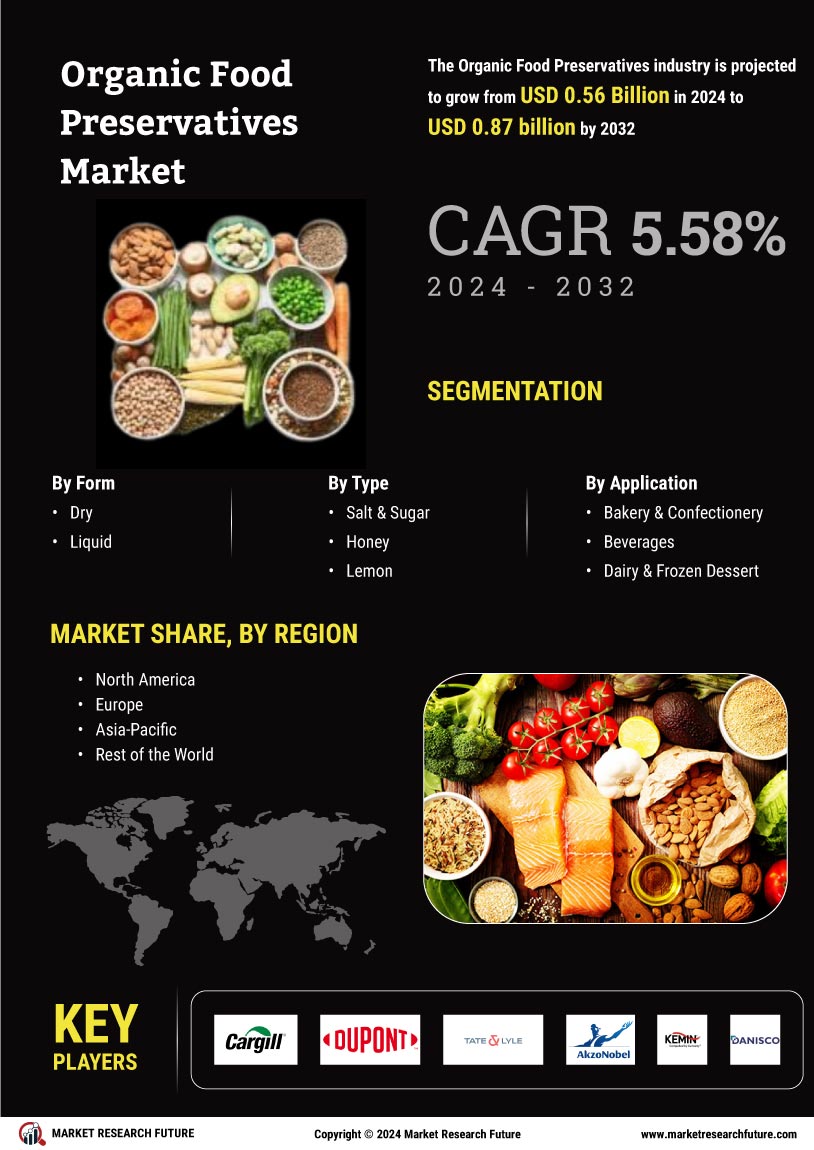Leading industry companies are making significant R&D investments to broaden their product offerings, which will spur further expansion of the market for Organic Food Preservatives products. Important market developments include new product releases, contractual agreements, mergers and acquisitions, greater investments, and collaboration with other organizations. Market participants also engage in several strategic actions to increase their worldwide presence. The Organic Food Preservatives industry must offer products at reasonable prices to grow and thrive in a more cutthroat and competitive environment.
One of the primary business strategies manufacturers employ in the worldwide Organic Food Preservatives industry to benefit customers and expand the market sector is local manufacturing to reduce operating costs. The Organic Food Preservatives industry has recently provided some of medicine's most important benefits.
Major players in the Organic Food Preservatives market, including Cargill Incorporated (U.S.), DuPont de Nemours, Inc. (U.S.), Tate & Lyle (U.K.), Univar Inc. (U.S.), Akzo Nobel N.V. (Netherlands), Kemin Industries, Inc. (U.S.), Hawkins Watts Limited (Australia), Danisco A/S (Denmark), Koninklijke DSM N.V. (Netherlands), Brenntag Solutions Group, Inc. (Germany), Hawkins Watts Limited (New Zealand), BASF SE (Germany), Galactic S.A. (Belgium), Archer Daniels Midland Company (U.S.), Kerry Group plc (Ireland), and others, are attempting to increase market demand by investing in research and development operations.
The French American manufacturer and chemist Éleuthère Irénée du Pont de Nemours founded the international chemical corporation DuPont de Nemours, Inc., also known as DuPont, in 1802. The business began as a significant supplier of gunpowder and later played a significant part in establishing Delaware. A well-known firm, IFF, successfully concluded the merger with the nutrition and biosciences division of DuPont in February 2021. The United company will continue to operate under the name IFF.
Irish-based Kerry Group plc is a publicly traded food business. It is traded on the London Stock Exchange and the Dublin ISEQ. Given the company's roots in the cooperative movement, its farmer suppliers still own a sizable stake in the business. Kerry Group plc (Ireland) added the newly renovated plant in Rome, Georgia, to its food production operations in March 2022. The largest food production plant ever built in the U.S. cost USD 141 million.
This plant seeks to offer integrated flavor and nutrition solutions to satisfy rising consumer demand in the chicken, seafood, and alternative protein industries across the U.S. and Canada.

















Leave a Comment